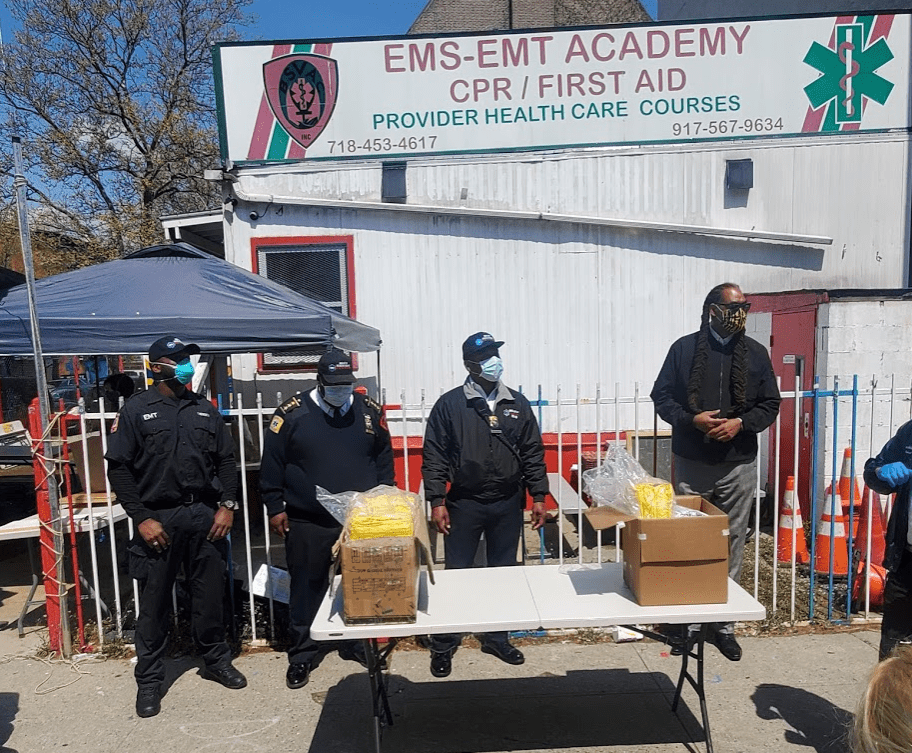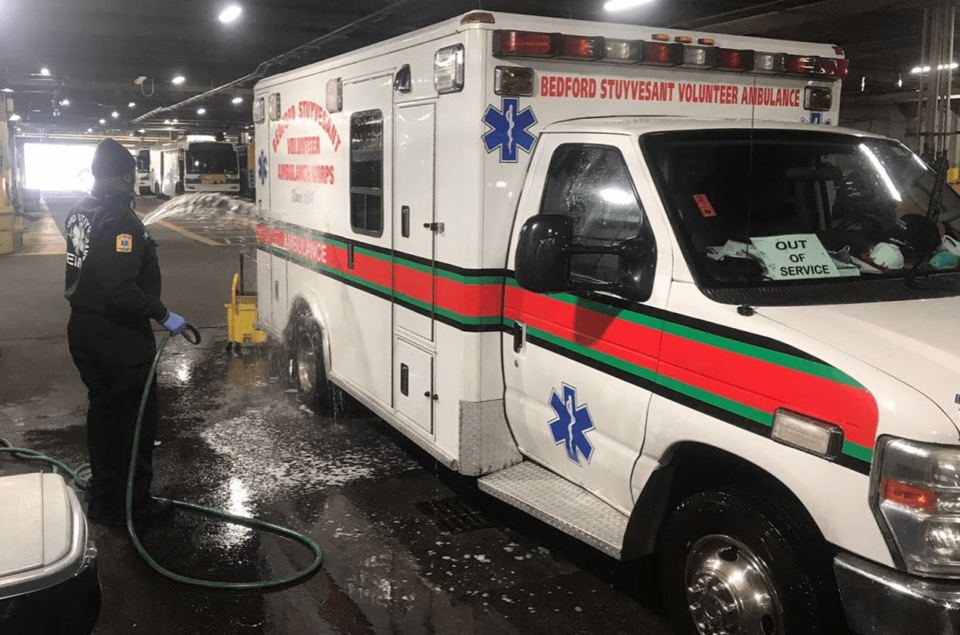By now, we've all heard the stories of a 911 call center overwhelmed by emergency calls for help around the coronavirus. The truth is, emergency medical services and ambulances are struggling to keep up.
Well, in some parts of Brooklyn, the scenario of a scarce EMT presence really is not all that new. In fact, there was a time, during the 70s and 80s in Brooklyn, when emergency calls in Bed-Stuy routinely went unanswered.
So, for the past three decades, when Bed-Stuy residents called for help, the Bedford-Stuyvesant Volunteer Ambulance Corps (BSVAC) have stepped up to answer the call.
But now, a surge in COVID-19 calls, along with a lack of community and governmental financial support, threatens the volunteer ambulance service's existence.
"We are out there available for you in your time of need, in your worst hour," BSVAC Commanding Officer Antoine Robinson told BKReader. "Now we need your help."
BSVAC responds to about 1,200 emergency calls annually. Before the COVID-19 outbreak, most of them were trauma cases, often involving an auto collision or a child struck while riding a scooter. Other calls typically involved someone having a heart attack or an asthma sufferer with trouble breathing.

There was a sudden upsurge of 911 calls when the pandemic struck, said Robinson, who works as a paramedic for the City, in addition to volunteering with BSVAC.
"A lot of people who suspected that they had COVID-19 symptoms called with complaints of things like a sore throat or fever, which overwhelmed the health care system," he explained.
At the same time, people who actually contracted the virus surged: "COVID-19 cases spread like wildfire. It hit like a sledgehammer, and the system was not prepared for that," Robinson added.
The FDNY's mutual aid agreement system required participating volunteer ambulance services to respond outside their usual territory, he stated. Consequently, at the height of the pandemic, BSVAC responded to emergency calls as far away as Bay Ridge and Greenpoint.
BSVAC has one emergency truck and 57 EMT volunteers. It costs about $10,000 per month to cover expenses, that includes vehicle insurance, paying rent, and keeping the lights on at their facility.
"The revenue we normally count on—from our in-person training programs, in-person EMT standby services at local events, and in-person neighborhood fundraising activities—has suddenly stopped because of the pandemic," explained BSVAC Treasurer Tamsin Wolf. "While, at the same time, we have to spend more on gas, ambulance repairs and maintenance, medical supplies and utilities, in order to answer the sharply increased volume of emergency calls."
There's also a cost associated with operating BSVAC's training program. Part of the mission from the start has been to provide training youths and adults to deliver emergency medical care. For some, the training is a path to a career that helps to end the cycle of generational poverty, he added.
Robinson's father, James "Rocky" Robinson who died in October, co-founded BSVAC in 1988 at the corner of Marcus Garvey Blvd. and Greene Ave. His niece's death from getting hit by a vehicle prompted him to establish the volunteer ambulance corps to serve the neighborhood. It took more than 30 minutes for an ambulance to respond to the accident, which was typical in minority communities at the height of the crack cocaine epidemic that started in the mid-1980s.
"Every other call was drug-related in Bedford-Stuyvesant. The ambulances during that time, the response time was anywhere from a half an hour to an hour—or sometimes not at all," James Robinson told the Amsterdam News in 2013.
BSVAC reduce the response time in the neighborhood to about 4 minutes.
"We do have constant support in Bed-Stuy. I would hate to downplay their donations," Robinson said. "However, there's not enough community support. I could count on one hand how many people in the community donate regularly."
BSVAC has launched a GoFundMe campaign with the goal of raising $50,000. Donations can also be made here on the organization's website.




